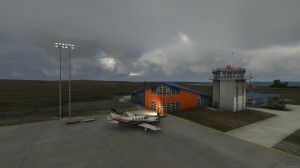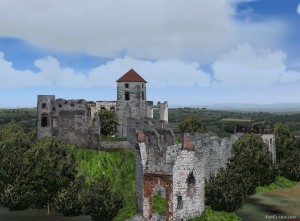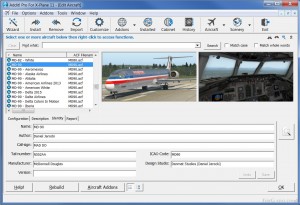Textures Only
CFS Macro Fiat-Ansaldo L3 35 API MACRO CFS Version of a WWII ground vehicle. The L3 35 or Carro Veloce CV-35 (Fast Tank 1935) was an Italian tank used before and during World War II. Although designated a light tank by the Italian Army, its turretless configuration, weight and firepower make it closer to contemporary tankettes. The L3 35 was developed from the design of Carden Loyd Mark VI tankette imported from Britain in 1929. In 1935, a slightly improved model of the Mark VI was introduced and designated as the CV-35. The primary differences were that the armour was bolted rather than riveted and the single 6. 5 mm machine gun was replaced with twin 8 mm machine guns. In 1938, the vehicles were redesignated as the L3 35 (L for Leggero or light). In addition to seeing action in the Secon
Show more... d Italo-Abyssinian War, the Second Sino-Japanese War, the Spanish Civil War and the Anglo-Iraqi War, the L3 was used almost everywhere that Italian troops fought during World War II. L3s were found on the Italian French border, North Africa, Italian East Africa, the Balkans, USSR, Sicily, and Italy. The combat history of the L3s during the interwar period was not good. On at least two occasions during the Italian invasion of Ethiopia, L3s were put out of action by massed infantry attacks. In Spain, L3s of the Corps of Volunteer Troops (Corpo Truppe Volontarie, or CTV) were totally out-classed by the T-26 and BT-5 tanks provided to the Republican forces by the Soviet Union. On 10 June 1940, when Italy entered World War II, the Royal Italian Army (Regio Esercito) possessed only about one-hundred M11 39 medium tanks in two tank battalions. L3 tankettes still equipped all three Italian armored divisions, they equipped the tank battalions in the motorized divisions, they equipped the light tank squadron group in each Fast (Celere) division, and they equipped numerous independent tank battalions. On 22 March 1941, two Iraqi L3s were reported to have been put out of action near Fallujah during the Anglo-Iraqi War. Though numerous, Italys tankettes proved to be outclassed from the start and also proved to be of low tactical value. Other than those used for occupation duties in the Balkans and elsewhere, few L3s remained in front line service past the end of 1940. After the Kingdom of Italy quit the war in 1943, L3 tankettes were used by German Army (Wehrmacht Heer) forces and by pro-Axis forces of the National Republican Army (Esercito Nazionale Repubblicano) of the Italian Social Republic (Repubblica Sociale Italiana, or RSI). The L3 35 appeared in several variants including an anti-tank vehicle and a vehicle with a flame thrower. The L3 cc anti-tank (controcarro) was an L3 with a Solothurn 20 mm anti-tank rifle mounted in place of its normal machine gun armament. Only a few were so modified, and they saw action only in North Africa. The L3 Lf flamethower (lancia fiamme) flame tank was another variant of the L3 tankette. Development began in 1935. The flamethrower nozzle replaced one of the machine guns, and the flame fuel was carried in an armored trailer towed by the vehicle. Later versions had the fuel carried in a box-shaped tank mounted above the L3s engine compartment. The vehicle weighed 5 tonnes. The L3 Lf saw action in Abyssinia, Spain, France, the Balkans, North Africa, and Italian East Africa. (Source. Wikipedia on Line) I have created this api macro with Easy Object Designer (EOD), Version 2. 2. 85 (Matthias Br ckner), to generate a static Fiat-Ansaldo L3 35, with use of BMP textures, oriented to CFS scenery designers and that they work with Airport 2. 0 or later. This macro was tested only in CFS1 sceneries, but I believe that can work without problems in CFS2-3 and FS2000-2002. All mine API macros, could be included on objects libraries with crash detection (for CFS missions), but must be distributed with the original API-MACRO copyright. Edmundo Abad Santiago-Chile February 2011
Show less...







